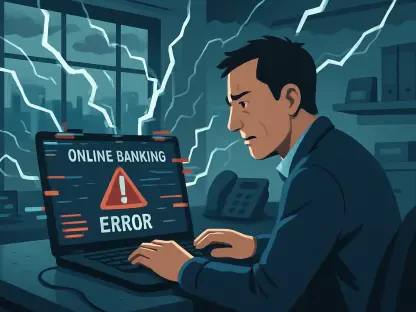The rise in fraud targeting small and medium businesses (SMBs) has highlighted the urgent need for banks to enhance their fraud protection mechanisms. Traditional approaches, primarily designed for individual consumers or large enterprises, fall short of addressing the unique challenges faced by SMBs. This article explores the critical importance of tailored fraud protection for SMBs and the innovative solutions banks can implement to safeguard these vital economic players.
The Economic Significance of SMBs
Small and medium businesses are the backbone of the U.S. economy, with the U.S. Small Business Administration (SBA) reporting 33.2 million SMBs in the country. These businesses contribute significantly to revenue growth in various sectors, including credit cards, deposits, and merchant payments. Given their substantial economic impact, ensuring the security and operational integrity of SMBs is paramount.
Occupying a unique space between individual consumers and large enterprises, SMBs necessitate a distinct approach in financial services. Unlike large corporations, SMBs often operate with limited resources and tighter margins, making them particularly vulnerable to fraud. Therefore, sophisticated and tailored fraud protection measures are essential to support their growth and sustainability.
Current Gaps in Fraud Protection
Despite their importance, SMBs often find themselves underserved by existing fraud protection systems. Most modern authentication methods, such as SMS one-time PIN codes and username-password combinations, are designed for individual consumers and are inefficient for SMBs. These methods fail to address the specific needs and operational complexities of small businesses.
Commercial options like hardware tokens, while effective, can be too complex and cumbersome for SMBs to implement and manage. This gap in suitable fraud protection solutions leaves SMBs exposed to significant risks, highlighting the need for a more balanced and tailored approach that combines security with ease of use.
The Rising Threat of Fraud Targeting SMBs
The threat landscape for SMBs is evolving, with a notable increase in fraud incidents. According to the 2023 Business Impact Report by the Identity Theft Resource Center (ITRC), 73% of small U.S. businesses experienced data breaches, cyberattacks, or both in the past year. This alarming statistic underscores the growing vulnerability of SMBs to cyber threats.
The nature of these attacks is also changing, with a rise in phishing and social engineering scams. These sophisticated techniques exploit human vulnerabilities, making traditional security measures inadequate. As cybercriminals become more adept, SMBs require advanced and adaptive fraud protection solutions to stay ahead of these emerging threats.
Financial and Reputational Consequences of Fraud
The financial implications of fraud are particularly severe for SMBs due to their limited resources and tighter margins. Fraud-related cash flow disruptions can jeopardize an SMB’s ability to pay suppliers, cover payroll, or invest in growth initiatives. The financial strain caused by fraud can have long-lasting effects on the viability and success of small businesses.
Beyond financial loss, fraud can inflict significant reputational damage on SMBs. Trust is a critical component of business relationships, and a single fraud incident can erode customer confidence and loyalty. The long-term business challenges resulting from reputational damage further emphasize the need for robust fraud protection measures.
Balancing Security and Customer Experience
One of the key challenges in enhancing fraud protection for SMBs is striking the right balance between security and customer experience. Account takeover (ATO) is a prevalent and dangerous form of financial crime that banks must address without compromising the user experience. Customers desire frictionless interactions, but banks often struggle to implement effective solutions like behavioral signals and passwordless authentication.
The “2024 Link Index for ATO Prevention in Banking” report highlights the importance of integrating security measures seamlessly into the customer journey. By adopting solutions that are both secure and user-friendly, banks can protect SMBs while ensuring a positive customer experience. This balance is crucial for maintaining trust and fostering long-term business relationships.
Leveraging Technological Solutions
To address the unique needs of SMBs, banks are increasingly turning to advanced technological solutions. Artificial Intelligence (AI) and Machine Learning (ML) offer promising avenues for enhancing fraud protection. These technologies enable banks to implement robust, multilayered security measures that are both effective and minimally intrusive.
Biometric authentication, behavioral analytics, and risk-based authentication (RBA) are among the innovative solutions being integrated into banking systems. These technologies provide context-aware authentication, reducing friction in transaction processes while enhancing security. By leveraging AI and ML, banks can detect and prevent fraudulent activities more effectively, offering SMBs the protection they need.
The Shift Towards Digital Solutions
The surge in fraud targeting small and medium-sized businesses (SMBs) has made it increasingly clear that banks need to ramp up their fraud protection efforts. What works for individual consumers or large businesses often doesn’t cut it for SMBs, which face unique challenges. Traditional methods fall short when it comes to addressing the specific needs of SMBs, leaving them particularly vulnerable.
This article delves into why it’s so crucial for banks to create and implement customized fraud protection strategies tailored specifically for SMBs. Given that SMBs are vital players in the economy, safeguarding them with innovative and effective solutions is essential. Banks need to move beyond one-size-fits-all approaches and invest in technologies and practices specifically designed to protect SMBs from fraud. In doing so, they can ensure the stability and growth of these key economic contributors, providing them with the security they need to thrive.









